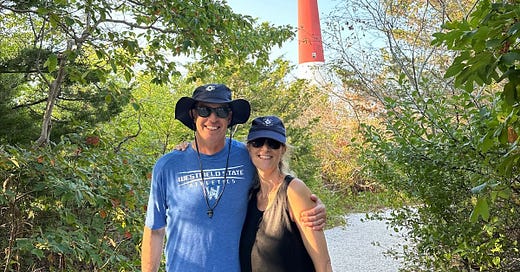Why Blue Space is Better Than Green Space
Spending time near water improves psychological and physical well-being
A few years ago — aided by selling a rental property we’d owned for decades — my husband and I bought a beach house that we could almost afford.
We texted our three children from the real estate office, telling them we had both good news and bad news. The good news was, of course, that we had bought a beach house. The bad news was that we could now only afford to send two of them to college (a comment meant in jest, although our middle child eagerly volunteered to skip college).
This house is about five hours from our home in Massachusetts, so the trip is not easy. But every time we arrive, we see the ocean and the stress of the drive — the traffic jams, the suboptimal bathrooms, the fast food snacking — fades away.
And our experience is not at all unusual.
There’s a reason why people pay more for a hotel room — or house — with a view of water: Looking at water helps calm the body and reduce arousal. It decreases our heart rate and blood pressure and increases hormones, such as serotonin and endorphins, in the body that make us feel good.
One of the largest studies to examine the impact of so-called “blue spaces” — oceans, rivers, lakes — collected data from more than 20,000 people in the United Kingdom. Using a smartphone app that tracked people’s specific location, researchers asked the participants to report their overall sense of well-being at random points throughout the day.
They then calculated how close people were to different types of natural environments, including marine and coastal locations as well as different types of green spaces.
No surprise: People were generally much happier when in any type of natural environment than in urban locations. But all nature was not equally beneficial. People were happiest in marine and coastal locations.
Why does spending time in marine and coastal locations make us feel better? One explanation is that looking at a vast body of water puts our own stressors in proper perspective.
“Seeing ourselves in a coastal space allows us to let go of things in a way that other spaces don’t,” notes Catherine Kelly, author of Blue Spaces: How & Why Water Can Make You Feel Better. “Here I am, this small thing. So my problems are maybe not that big after all.”
And for those of us not lucky enough to live near the beach, here’s some encouraging news: Simply looking at water even in an urban environment — such as a river or canal in the midst of a city — can make you feel better.
So, here’s my key takeaway from this research: find some way to spend time by water whenever you can.
Maybe that means paying a little more for a hotel room with a view of the ocean. Maybe that means going for a walk by the river on your lunch break. For me, that means counting the days (15 as of this posting) until we get to make that five hour drive and spend a weekend at the beach.
And now a question for you: What’s your favorite blue space? And why do you think spending time near water feels so good? Share in the comments!





Bravo, well said. Our view of the CT river from our 1763 farmhouse is a daily if not an hourly treat and mood elevator and stress reducer, as are your Happiness Newsletters themselves. Thank you. AC Class of 1963.
Crane Beach is my happy place. It is 1 1/2 hours to get there and 2+ to return (traffic). We are retired so we try to get up there at least once during the week in the summer. Just writing about it makes me feel happy. The vastness, seeing the infinite horizon and the soft sand are great motivators for me.